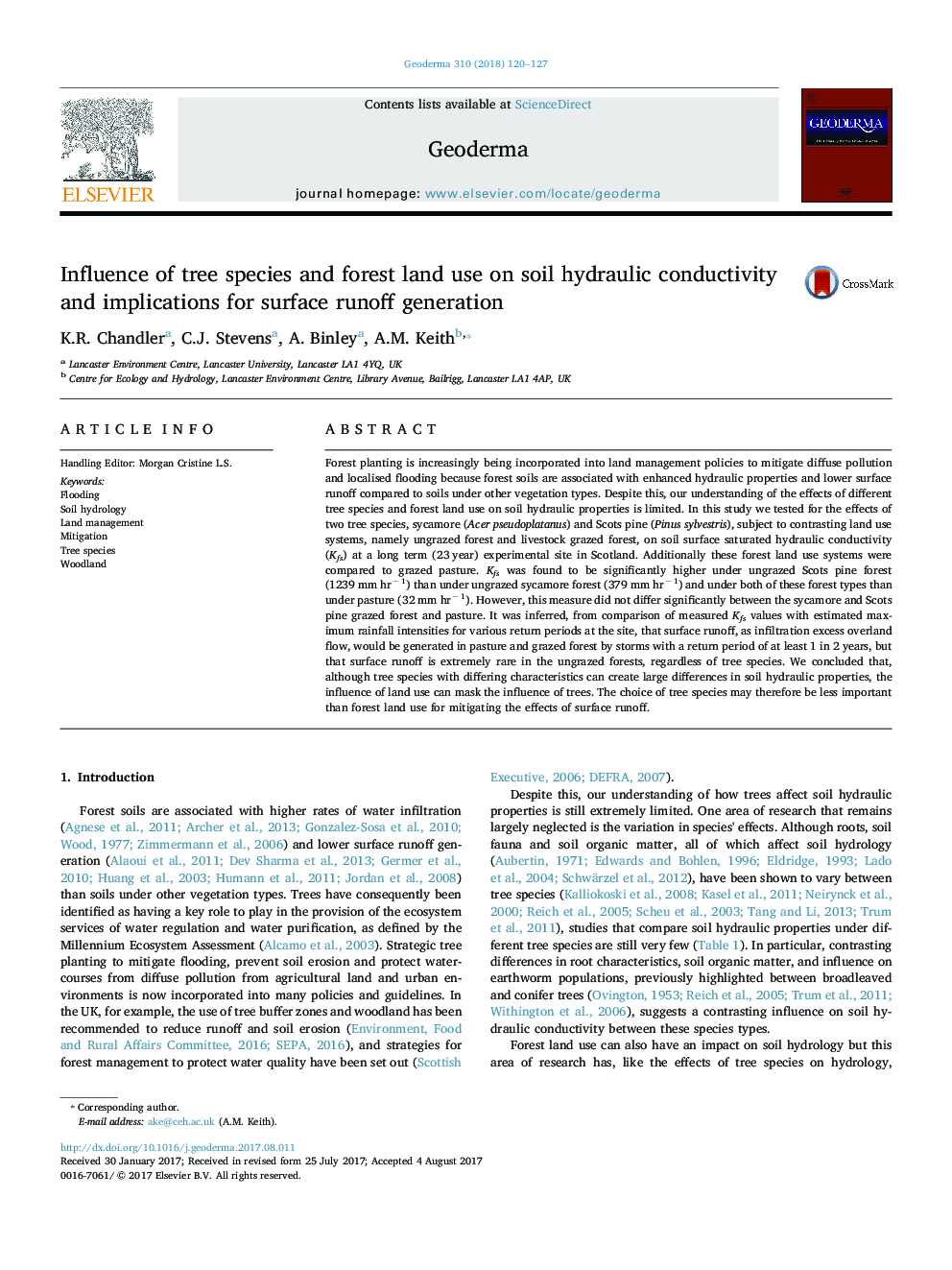| کد مقاله | کد نشریه | سال انتشار | مقاله انگلیسی | نسخه تمام متن |
|---|---|---|---|---|
| 5770365 | 1629407 | 2018 | 8 صفحه PDF | دانلود رایگان |
- Forest land cover had greater soil hydraulic conductivity than pasture.
- Contrasting tree species can mitigate the effects of surface runoff.
- Return period indicates surface runoff would be extremely rare in ungrazed forest.
- Livestock grazing under trees negates their mitigative potential against flooding.
Forest planting is increasingly being incorporated into land management policies to mitigate diffuse pollution and localised flooding because forest soils are associated with enhanced hydraulic properties and lower surface runoff compared to soils under other vegetation types. Despite this, our understanding of the effects of different tree species and forest land use on soil hydraulic properties is limited. In this study we tested for the effects of two tree species, sycamore (Acer pseudoplatanus) and Scots pine (Pinus sylvestris), subject to contrasting land use systems, namely ungrazed forest and livestock grazed forest, on soil surface saturated hydraulic conductivity (Kfs) at a long term (23 year) experimental site in Scotland. Additionally these forest land use systems were compared to grazed pasture. Kfs was found to be significantly higher under ungrazed Scots pine forest (1239 mm hrâ 1) than under ungrazed sycamore forest (379 mm hrâ 1) and under both of these forest types than under pasture (32 mm hrâ 1). However, this measure did not differ significantly between the sycamore and Scots pine grazed forest and pasture. It was inferred, from comparison of measured Kfs values with estimated maximum rainfall intensities for various return periods at the site, that surface runoff, as infiltration excess overland flow, would be generated in pasture and grazed forest by storms with a return period of at least 1 in 2 years, but that surface runoff is extremely rare in the ungrazed forests, regardless of tree species. We concluded that, although tree species with differing characteristics can create large differences in soil hydraulic properties, the influence of land use can mask the influence of trees. The choice of tree species may therefore be less important than forest land use for mitigating the effects of surface runoff.
Journal: Geoderma - Volume 310, 15 January 2018, Pages 120-127
